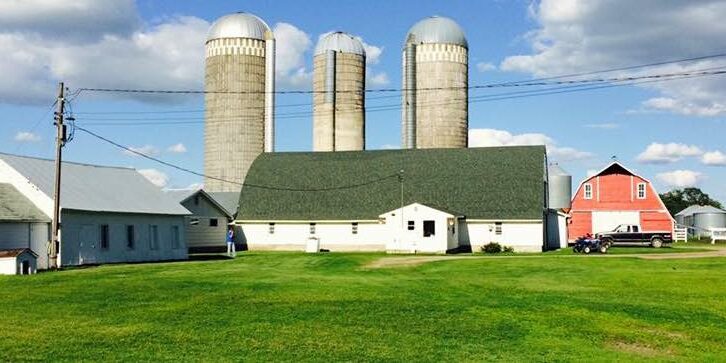Project Outlines
Feeding the Future

Step 1: The Build
As in many places across the country, the 2016 election results surprised journalists in Minnesota, where rural voters nearly turned the tide in the historically blue state. The takeaway from the election for Minnesota Public Radio (MPR) environmental and agriculture reporter Elizabeth Dunbar was a sense of being out of touch with large portions of the state’s population. To begin to remedy this, MPR connected with Spaceship Media to devise a dialogue journalism project to address the rural-urban divide in Minnesota.
Step 2: The Gather
The target group for this discussion fell easily into place, given Dunbar’s expertise as an environmental and agricultural reporter. Farmers, foodies, and anyone else involved or interested in the food supply chain and how it interacts with the environment were called upon to join this discussion.
The MPR team got creative with who they wanted to reach and how. They advertised the project in person, manning tables at county fairs, reaching out to the MPR audience on Facebook and Twitter, getting the word out via the communications teams at the Farmers Union and Farmers Bureau, and posting signs at gardening stores, supermarkets, and restaurants — just to name a few of their outreach methods. Throughout this process, ensuring a diverse group of participants was a top priority for project leaders.
The callout message looked something like this: You may have heard I’ve launched a project on the future of agriculture — I’m experimenting with something new. Rather than me come up with all the stories, I want to hear from you. Part of the way I’m doing that is by starting a closed Facebook group to explore some of the disagreements over who bears more responsibility for taking care of the environment and protecting the food supply for the future. Is it the socially conscious consumer who is willing to pay more for food grown more sustainably? Or is it farmers who make the decisions about what they grow and how they grow it?
Step 3: The Welcome
Once the word about the project had been spread, MPR sent out a survey to people interested in participating. The survey asked people to answer the project’s organizing question:
What do the rest of us most misunderstand about agriculture and our food system?
It also asked for demographic information, to ensure a diversity of voices throughout the project. MPR reporters then spoke with each of the the selected participants on the phone. “We explained that the conversation was off the record, that my role was to moderate and serve the group by adding reporting and research to the conversations,” said Dunbar. “And we answered any questions they had.”
Once they joined the Facebook group, participants were greeted with a video of Dunbar and MPR Digital Editor Michael Olson explaining the project. They encouraged participants to introduce themselves to the group. Dunbar also provided some details about the group, like a map of where all the group members were from and an article she had written framing the project.
Step 4: The Experience
For the month that Feeding the Future ran, the participants themselves mainly steered the discussion, though MPR staff found that engagement increased when a moderator was present, asking questions or providing additional information for participants.
The group proved to be a productive source of information for participants and reporters alike. The group’s collective knowledge of agriculture and food systems is deep and specific — Feeding the Future created a space for such niche knowledge to be shared and flourish among a community that had not previously gathered together.
Although the project wrapped up in October 2017, the Facebook group is still an active home to conversation among Minnesotans.
Step 5: The Carry
Moderation in this group needed only a mild hand — as mentioned above, moderators typically served to encourage the conversation, not necessarily tamp down tensions or aggression.
“During Feeding the Future, my interviews became less about extracting information and more about enjoying the conversation, and allowing interviewees to self-reflect. I slowed things down, and I often felt that the process was as impactful as the resulting story, if not more so. It was one of the most satisfying things I’ve done as a journalist,” Dunbar wrote in an essay after the project ended.
Step 6: The Nourish
Throughout the life of the project, reporter/moderators offered information about current events in agriculture policy, especially in Minnesota, as a jumping-off point for discussions. Who better to discuss Minnesota farming policy than Minnesota farmers? All the moderators had to do was provide a forum.
Step 7: The Share
With this project, Dunbar was able to do innovative reporting on the beat she’d had for years. Although MPR’s broader audience may not have had as deep a knowledge of food systems and soil health as the project participants, Dunbar was able to translate that knowledge into stories that were relevant to the majority of readers. “Stories about challenges new farmers face and agriculture education came about from some of these public engagement efforts, and there’s more to come,” Dunbar wrote.
With this project, Dunbar was able to do innovative reporting on the beat she’d had for years. Although MPR’s broader audience may not have had as deep a knowledge of food systems and soil health as the project participants, Dunbar was able to translate that knowledge into stories that were relevant to the majority of readers. “Stories about challenges new farmers face and agriculture education came about from some of these public engagement efforts, and there’s more to come,” Dunbar wrote.
Here are some of Dunbar’s stories that came out of Feeding the Future:
State Fair reflects trends in food and farming
New co-op brings groceries, hope to north Minneapolis
Clueless consumers motivate agriculture educators to reach more students
Notes from the field: Good reporting starts with listening
Know your pork: Comparing 2 very different pig farms